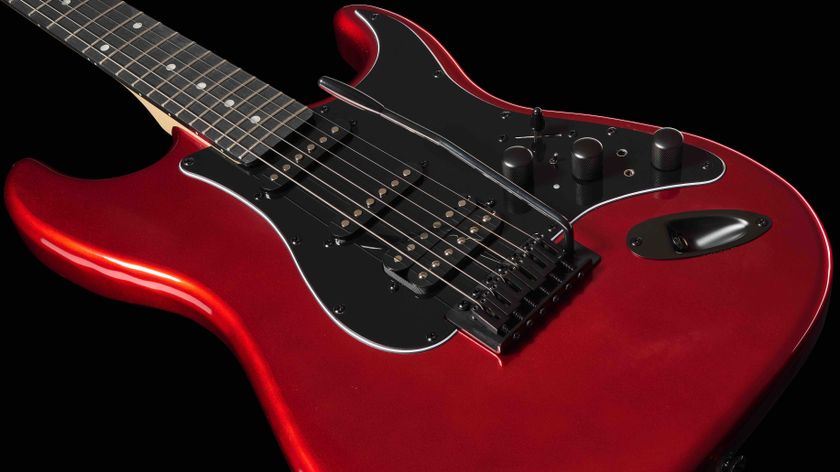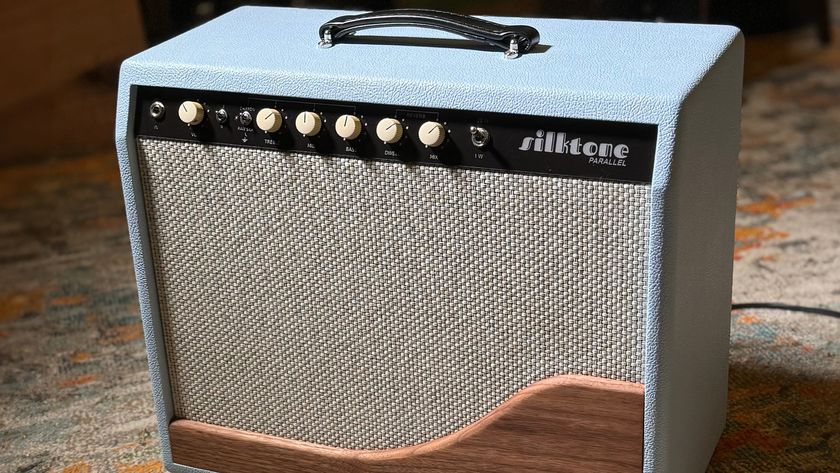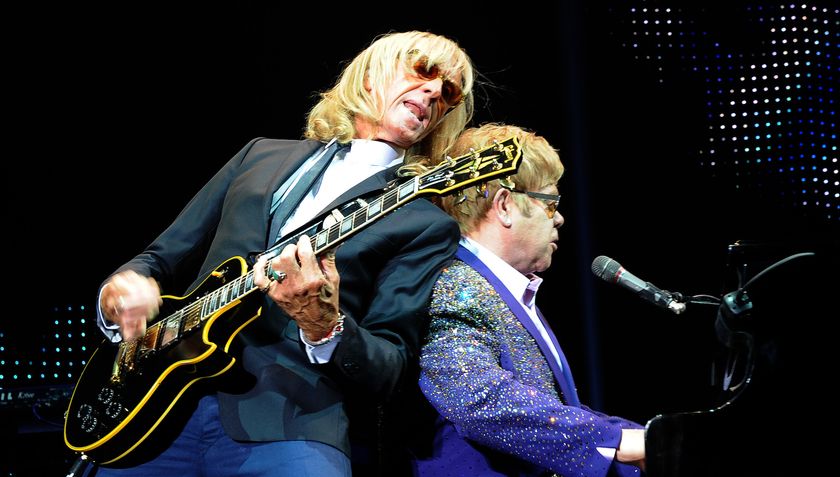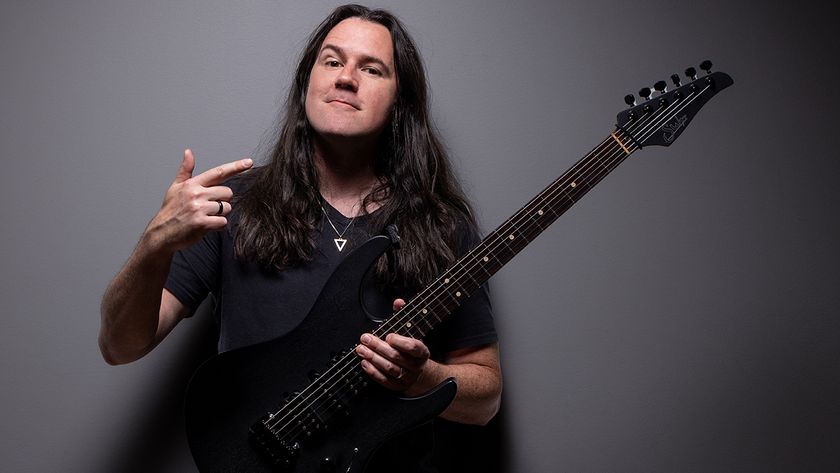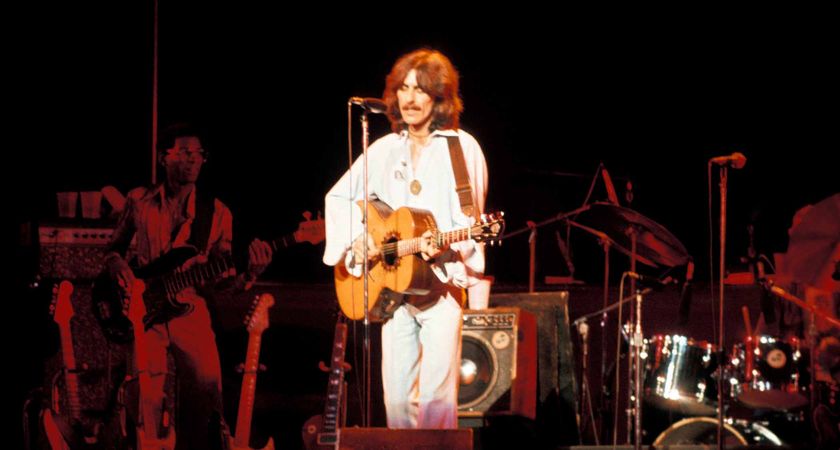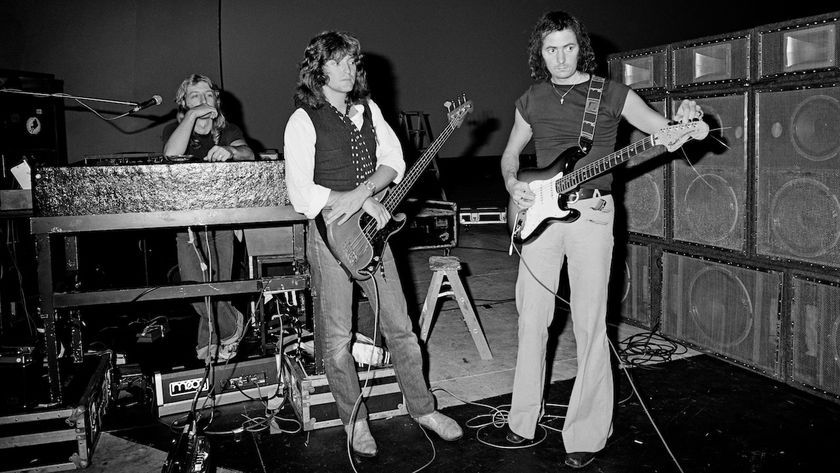Interview: Former Rolling Stones Guitarist Mick Taylor Discusses Gear, Bluesbreakers, Iridium and The Stones
Mick Taylor's path to glory started one night in 1965 when the guitarist in John Mayall's backing band, The Bluesbreakers, played hooky from a gig.
A guitar and amp were present, but their owner, Eric Clapton, had somewhere else to be.
Sixteen-year-old Mick Taylor, who was in the audience that night, asked Mayall if he could sit in. The band leader agreed, and Taylor, who was already familiar with Mayall's material, made a strong and lasting impression.
A year and a half later, after Clapton and his immediate replacement in The Bluesbreakers, guitarist Peter Green, had gone on to form bands of their own, Mayall called Taylor, now 18, and asked him to join the band. The Mayall/Taylor lineup went on to record several cutting-edge examples of modern British blues, including 1967's brilliant Crusade and 1968's Bare Wires.
In 1969, after three years of faithful service from Taylor, Mayall recommended the young guitarist to Mick Jagger, who was looking for someone to fill a vacancy in The Rolling Stones, the result of Brian Jones' recent dismissal from the band.
Taylor's fluid, melodic soloing and controlled burn made an immediate impact on the Stones' sound, and his tenure with the band is often hailed as their creative high point. He contributed to 1969's Let It Bleed and starred on three classic albums, 1970's Get Yer Ya-Ya's Out!, 1971's Sticky Fingers and 1972's Exile On Main St., leaving several seminal tracks in his wake, including “Can’t You Hear Me Knocking," "Sway" and "Doo Doo Doo Doo Doo (Heartbreaker)" from 1973's Goats Head Soup.
Taylor left the band in December 1974, shortly after the release of It's Only Rock 'n' Roll. Since then, he's been living the sort of life you'd expect a former Rolling Stone to lead -- touring the universe as a solo artist or with Bob Dylan, Jack Bruce or Alvin Lee, guesting on friends' albums -- even joining Jagger in the studio in 2010 to overdub guitar onto "Plundered My Soul," a leftover song from the Exile on Main St. sessions.
Get The Pick Newsletter
All the latest guitar news, interviews, lessons, reviews, deals and more, direct to your inbox!
Taylor is heading to New York City to kick off a six-night run of shows at the Iridium Jazz Club starting May 9. The final night, May 14, will launch "Guitar World & The Iridium Present," a new series featuring top-notch guitarists performing with The Les Paul Trio. For more about Taylor's Iridium shows, and to buy tickets, visit the Iridium's events page.
When I spoke to Taylor late last month, I was in New York, and he happened to be in the old one -- historic York, England, where he was preparing for a show. "York is one of the oldest medieval cities in England, with little alleyways, courtyards and cathedrals," Taylor said. "We’re just passing through."
GUITAR WORLD: You've played with so many artists across so many genres, yet it all really started with John Mayall & The Bluesbreakers. Do you still consider yourself a blues guitarist at heart?
I consider myself, first and foremost, a blues-based guitar player. But I like playing instrumental music. It’s unfortunately being labeled as jazz-fusion. I mostly play blues covers, my own original songs, and other people’s songs that I like. Some Bob Dylan songs, for instance. But I also like to play some bluesy, jazzy instrumentals. Not too jazzy – it’s not like Pat Metheny or Robben Ford. It still has a rock and roll edge.
About two years ago, you finished up an old Rolling Stones song, “Plundered My Soul,” for the 2010 deluxe reissue of Exile on Main St. Was that a bizarre experience for you?
Yeah, it was one of Mick’s songs. It was among the outtakes that had to be finished. Actually, some of them were finished. But this particular song didn’t have a vocal on it and it didn’t have any lead guitar. It just had Keith Richards, Bill Wyman and Charlie Watts playing on it. So he asked me to step into the studio one afternoon, and I did some guitar in about three or four passes. I thought it turned out well.
It’s not typical of Exile On Main St. -- it’s just that it was recorded during that period. It’s got backup vocals and things on it that were done a couple of years ago. The original track is just sort of Keith’s rhythm guitar, Bill Wyman’s bass playing and Charlie Watts’ drumming, and it’s very raw. But yes, that was the last song I played with Mick. I’ve actually played with all those guys, including Bill Wyman and also Ronnie Wood, most recently. But I did a few shows with Bill and some tracks on a couple of his albums.
Another recent release featuring your guitar playing is Howlin' at the Moon, which came out last year but was recorded during The Bluesbreakers' 1982 reunion tour.
Yeah, that's a good album. I actually played several tours with Mayall in ’82 and ’83. I think the album you’re talking about was recorded in Baltimore or Chicago. There’s also one that was apparently recorded in Australia. But we did a couple of tours in America, Europe and Australia. Pretty much everywhere, really. We also did a long tour of England in 2004. That was a lot of shows; very long for just England.
Eric Clapton, his Les Paul and his Marshall amp pretty much defined the sound of British blues — and he definitely defined the sound of The Bluesbreakers. Then came Peter Green with a similar Les Paul sound but his own style. Were you influenced by those guys, and was it difficult to step into their shoes when you joined The Bluesbreakers? Did you struggle to forge a sound of your own?
Well, I had played with John Mayall a year and a half before I joined him – when Eric Clapton didn’t show up one night. So I knew most of Mayall’s set anyway, and I was familiar with the original versions of the Otis Rush and Freddie King songs. But when I joined John, it was quite a nerve-wracking experience -- to follow in the footsteps of Peter Green and Eric Clapton. But after about six months, I felt very confident and had developed my own sound.
Was it difficult for you to be compared to Clapton and Green by fans?
Certainly. There’s always that kind of favoritism – and that was the case among the early rock and roll guys like Jerry Lee Lewis, Eddie Cochran and Elvis Presley. I remember Keith Richards saying once that you can’t be an Eddie Cochran fan and an Elvis Presley fan [laughs]. But I liked both of them – and I liked Scotty Moore as well. I got into rock and roll and then I dove back into the blues, kind of like what the Stones did themselves. They started out as a blues band, really, until they started writing hit singles.
When you recorded with Mayall, did you have complete control over what you played, or was Mayall very hands-on in the studio?
No, he’d just let you play and play, you know. He just had an instinct.
Is there a Rolling Stones song you’re most proud of or that you feel best represents you?
Well, first of all, I like a lot of Stones songs – I like “Jumping Jack Flash” and “Street Fighting Man,” all for different reasons. But as far as the ones I played on, I like “Sway” -- and “Moonlight Mile” because I sort of had a hand in co-writing that, in a way. Or at least I wrote the riff the string part is based on.
But my favorite one in terms of my own guitar playing is “Time Waits for No One” [from It's Only Rock 'n' Roll]. I love that solo. I think it’s probably the best thing I did with the Stones. It’s not one of their hits; it was an album track. But it’s quite lyrical and it’s a bit different from a lot of other Stones songs. I’d done something that I’d never done. Because of the structure of the song, it pushed my guitar playing in a slightly different direction.
It’s more – I don’t like to use the term Carlos Santana-esque because it sounds too pretentious, but I kind of played in a different mode. I was playing over a Cmaj7 to an Fmaj7, which aren’t chords the Stones used that much. You know, they had their rock and roll songs and they had their ballads as well, and they were very different. And most of the ballads were usually written by me.
Let's talk about gear. What string gauges do you use?
Light top, heavy bottom. In other words, .10 to .17 and -- well, I forget the rest, but the bottom E is .52. That varies depending on the guitar I use. On a Fender Stratocaster, I’ll use slightly lighter-gauge strings. I wouldn’t use the heavy-bottom ones on a Fender.
Do you have specific tunings you stick to when you're playing slide?
I do, yeah, but I don’t use open tunings much. I use open tunings mostly for writing songs because you get some interesting chord sequences; like, instead of the root note, you’ll get a different note. It’s hard to explain technically. I could show you in person better. But with open tunings, I use open G, open E and open A. I've even used an open Em7 tuning, but I only did that for a particularly difficult song I used to play with Jack Bruce. So I use open E a lot, but I also play slide in regular tuning.
So you’ll use the same guitar for both and don’t necessarily keep guitars onstage that are set up for slide with higher action, etc.?
Right. I’ll switch within one song from playing regular guitar to a bit of slide. It’s much easier to do sitting down, but I have to stand up. I have to wait till I’m a bit older before I can sit down for shows [laughs]. Typically, you have to raise the bridge for slide. But because I play in regular tuning, and I bend the strings, I don’t have the strings too high -- or too low. And that can be quite difficult with the heavy-bottom strings. But I will say that on the open tunings, I do use heavy-gauge strings. The action isn’t that high, because then you couldn’t play licks or chords properly, so it’s somewhere in between. In other words, I customize it myself.
You mentioned a Strat earlier. Is that your main guitar these days, or are you still heavily into Les Pauls?
I play Les Pauls too, but I love Stratocasters. They’re such versatile guitars, especially if you get a good one. But I suppose I like to play a Les Paul, yeah. I play one from the time I was in the Stones. At least on the road. In the studio, I play all kinds of guitars – but mostly Gibsons as well.
Speaking of Les Pauls, do you prefer the wider neck of the ’59s or the skinny necks on the post-transitional 1960 models?
I like the wider neck. It’s the same with the SG. I like the slightly flattened back but with a wider neck. I don’t know why. I think it’s just because I got used to it. That’s the guitar I play most of the time on the Stones’ ’69 tour and on Get Yer Ya-Ya’s Out!
What pedals and amps are you using?
I use a chorus a little bit, and a wahwah pedal, and my preferred amp is an old Deluxe and a 50-watt Marshall.
You're heading to the Iridium in New York City for six shows. What kind of set will you be playing?
That’s sort of hard to clarify because I don’t really have a band at the moment. I’m coming to New York on my own, playing with [drummer] Bernard Purdie, who used to play with Aretha Franklin’s band and many famous Atlantic Records releases; [bassist] Wilbur Bascomb; and [keyboardist] Max Middleton, who’s coming in from England. We used to have a band in New York when I lived there. We used to play together quite a bit, and it was good fun.
Les Paul was so strongly associated with the Iridium, where he performed weekly for several years until his death in 2009. Did you ever meet him?
Yes, in 2007, and I don’t think I impressed him that much when I played with him. I sat in with him once in the house band while I was doing a recording project with someone else, and I tried to go over this jazz-blues song, but I didn’t sing the melody, so all you heard were the chords, and it was quite jazzy. I remember at the end of the song, he said, “Thanks very much, Mick. That was great, but I don’t think I’ll be singing that in the car on my way back to New Jersey” [laughs].
Photo: Shore Fire Media

















Damian is Editor-in-Chief of Guitar World magazine. In past lives, he was GW’s managing editor and online managing editor. He's written liner notes for major-label releases, including Stevie Ray Vaughan's 'The Complete Epic Recordings Collection' (Sony Legacy) and has interviewed everyone from Yngwie Malmsteen to Kevin Bacon (with a few memorable Eric Clapton chats thrown into the mix). Damian, a former member of Brooklyn's The Gas House Gorillas, was the sole guitarist in Mister Neutron, a trio that toured the U.S. and released three albums. He now plays in two NYC-area bands.
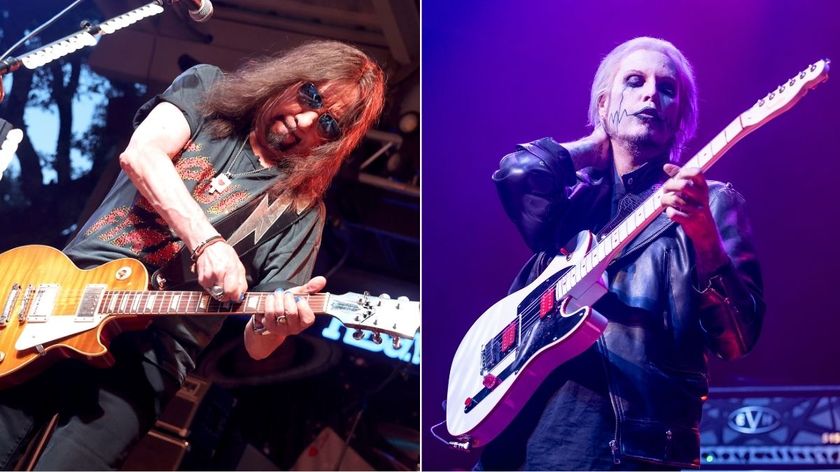
“No one does it better than him. That’s what inspired me to do what I’m doing today”: John 5 likes to push his playing to the limit – but says Ace Frehley does one thing better than any shredder on the planet
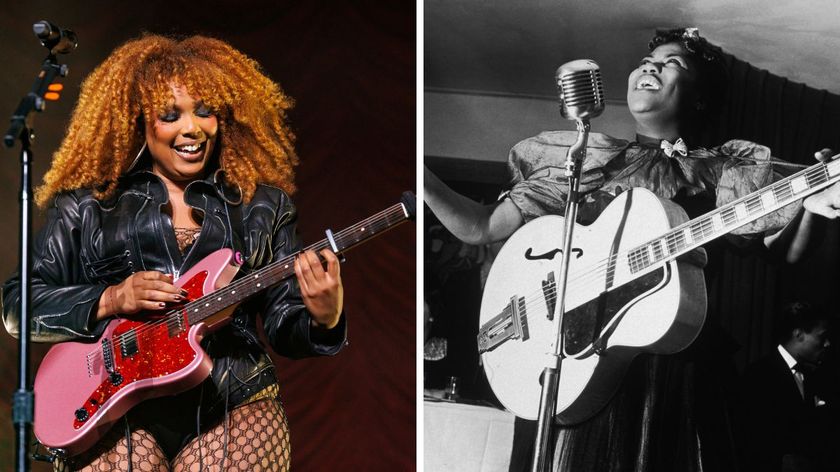
“Guitar hurts so bad – I have so much respect for guitar players”: Lizzo sets the record straight on why she's starring in the upcoming Sister Rosetta Tharpe biopic – and her guitar journey so far

